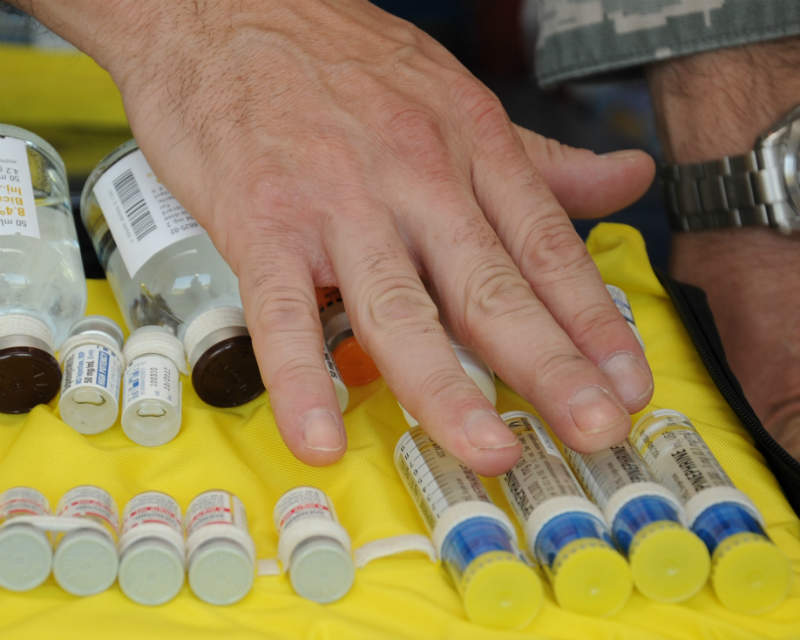
It has been a year since Mylan NV finalised a multi-million dollar settlement with the US Justice Department to resolve claims that it overcharged the US government for its EpiPen. Since then, things have not gotten easier for the company. In addition to manufacturing issues causing ongoing EpiPen shortages in the US, this summer has marked the arrival of two new serious contenders to the epinephrine injection device market that have the potential to completely transform the space.
First, this July, Adamis Pharmaceuticals announced that Sandoz would be its commercialisation partner in the production of Symjepi, an epinephrine pre-filled syringe that is the first of its kind. Investors had been eagerly awaiting news of a marketing partner since the device was approved in 2017 after multiple FDA submissions. Then last week, Teva Pharmaceuticals announced that its Abbreviated New Drug Application (ANDA) for a generic epinephrine auto-injector was finally approved by the FDA.
The product, which utilises Antares Pharma’s VIBEX auto-injection platform, is the first product to be designated as a therapeutic equivalent to the EpiPen, and is therefore fully substitutable at the pharmacy. This marks the end of a long road for Teva, after being served with a complete response letter (CRL) to its first ANDA submission in February 2016. At the time, Teva estimated that the CRL would delay its launch date to 2017. Now in the summer of 2018 we are finally seeing the approval of this long-awaited product.
With the approval of Teva’s generic epinephrine auto-injector and the announcement of a commercialisation partner for Symjepi, questions have arisen about whether the two devices will be able to disrupt EpiPen’s hold on the epinephrine injection device market. Despite public ire over Mylan’s huge price hikes, charges of fraud by the US government, and the concomitant launch of competing products, Mylan’s EpiPen and licensed generic have retained the majority of market share in the US.
Alternative epinephrine injection devices
GlobalData believes that in comparison to other products released by smaller companies, such as Impax’s Adrenaclick and Kaleo’s Auvi-Q, the financial resources available to Sandoz and Teva will allow their products to draw significant market share away from Mylan. In particular, these companies will have the resources to enact powerful marketing strategies.
Mylan transformed the EpiPen into a billion dollar product through its own marketing campaign, making the device as ubiquitous as Kleenex in the public lexicon. It is clear that a similar focus on marketing will be necessary to elevate any other product in this market.
How well do you really know your competitors?
Access the most comprehensive Company Profiles on the market, powered by GlobalData. Save hours of research. Gain competitive edge.

Thank you!
Your download email will arrive shortly
Not ready to buy yet? Download a free sample
We are confident about the unique quality of our Company Profiles. However, we want you to make the most beneficial decision for your business, so we offer a free sample that you can download by submitting the below form
By GlobalDataWhen comparing the two products, Teva’s device has the significant advantage of being a generic product that can be directly substituted for the EpiPen at the pharmacy level. The device also has a similar injection mechanism as the EpiPen, as both are auto-injectors. Since switching devices always requires a degree of re-training, it would likely be more intuitive for patients to switch between two auto-injector devices. However, it is possible that the unique manual injection design of Symjepi will draw a following upon its launch.
In recent human factors studies presented at the 2018 American Academy of Allergy, Asthma & Immunology (AAAAI)/World Allergy Organization (WAO) Joint Congress and published in the Annals of Allergy, Adamis demonstrated that Symjepi was easier to use correctly than the EpiPen. If Symjepi proves to be as natural to use as the company claims, this and its small size will likely be important factors in convincing patients to switch to the device.
This past year has seen many shake-ups in the epinephrine injection device market. GlobalData believes that if powerful generics giants like Sandoz and Teva can navigate the space successfully, the eventual launch of their devices will continue to transform the space for the foreseeable future.




Related Company Profiles
Anda Inc
Adamis Corporation
Sandoz Inc
C R L Inc
Viatris Inc